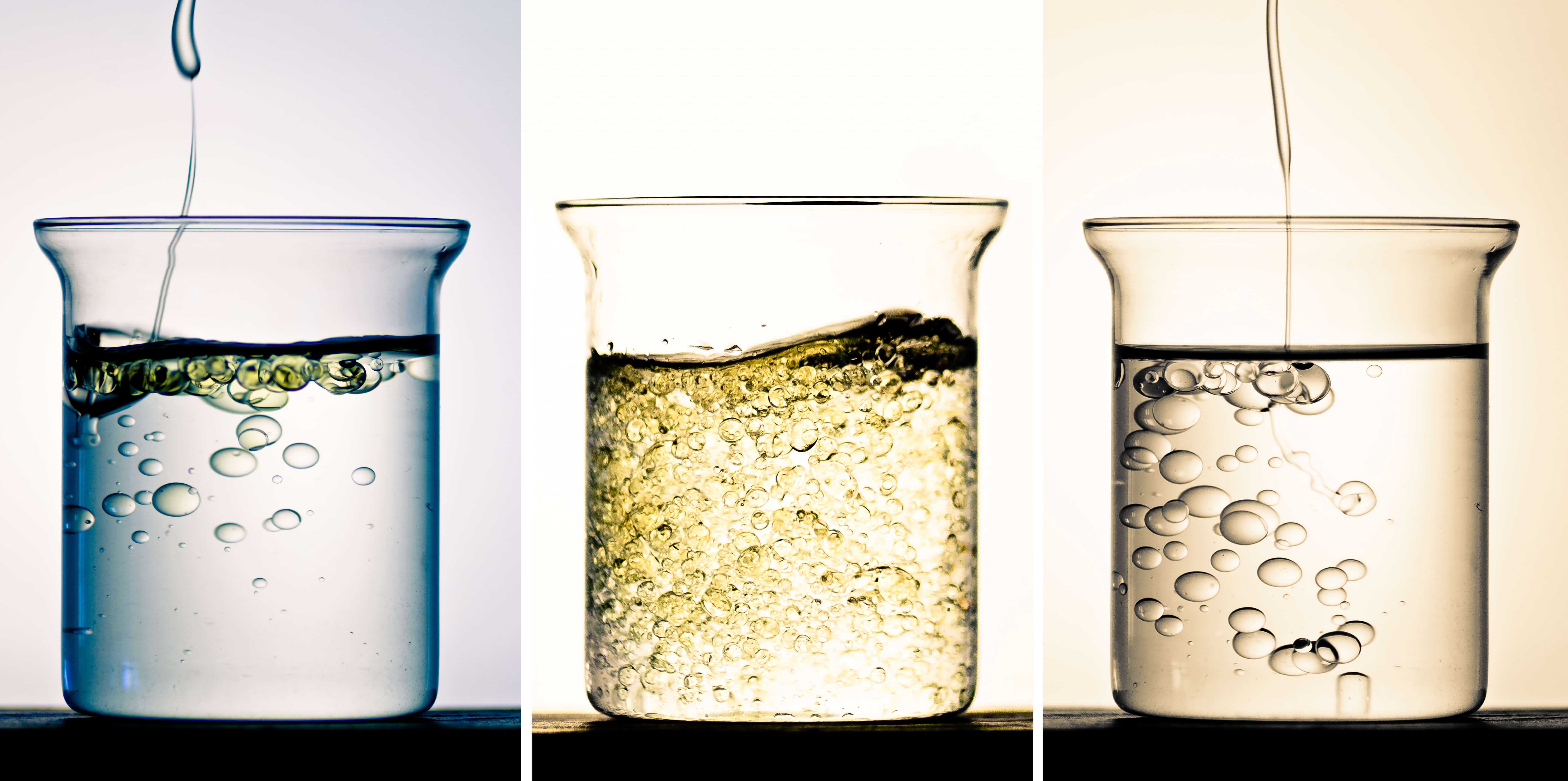


The oil in water or water in oil type emulsions can be identified by the following tests: The two types of emulsions can be interconverted by simply changing the ratio of the dispersed phase and dispersion medium.įor example: an oil-in-water emulsion can be converted to water-in-oil emulsion by simply adding excess of oil in the first case. Such types of emulsions are called oily emulsions.įor example: butter, cod liver oil, cold cream, etc. (ii) Water-in-oil (w/o type) emulsions: Water acts as the dispersed phase while the oil behaves as the dispersion medium. Such emulsions are called aqueous emulsions. Vanishing cream is another example of this class. Oil acts as the dispersed phase (small amount) and water as the dispersion medium (excess).įor example: milk is an emulsion of soluble fats in water and here casein acts as an emulsifier. Therefore, milk is a fairly stable emulsion.ġ) Oil-in-water (o/w type) emulsions.

Emulsifiers are generally long chain molecules having polar groups.Ī) The soaps are sodium or potassium salts of higher fatty acids such as sodium palmitate (C 15H 35COONa), sodium stearate (C 17H 35COONa).ī) A molecule of soap consists of two parts : hydrocarbon non-polar part (e.g., C 15H 35, C 17H 35 etc.) which is soluble in oil and the polar group (-COO‾Na +) which is soluble in water.Ĭ) When a drop of oil is surrounded by soap solution, R-part of the soap remains in oil and the -COO‾Na + part remains in water.ĭ) As a result, soap molecules get concentrated over the surface of the drop of oil and therefore form protective film around each oil drop.Į) As a result, the interfacial tension between oil and water decreases and therefore they are intermixed to form the emulsion.Ĭasein (a protein), a lyophobic colloid present in milk acts as an emulsifying agent as it forms a protective layer around fat molecules dispersed in water. The main function of the emulsifier is to reduce the interfacial tension between the two liquids forming the emulsion. The stabilisation of an emulsion by means of emulsifier is called emulsification. The emulsions are generally unstable and are stabilised by the addition of suitable emulsifier. The substances that are commonly used as emulsifying agents are gum, soap of different forms, gelatin, albumin, etc. Any two immiscible liquids form an emulsion.įor example: milk is a naturally occurring emulsion in which the particles (or globules) of liquid fats are dispersed in water. the dispersion of finely divided droplets in another liquid. 8.10 11) Blue Colour of the Sky and SeaĮmulsions are the colloidal solutions in which both the dispersed phase and the dispersion medium are liquids.Įmulsions are liquid-liquid colloidal systems i.e.


 0 kommentar(er)
0 kommentar(er)
